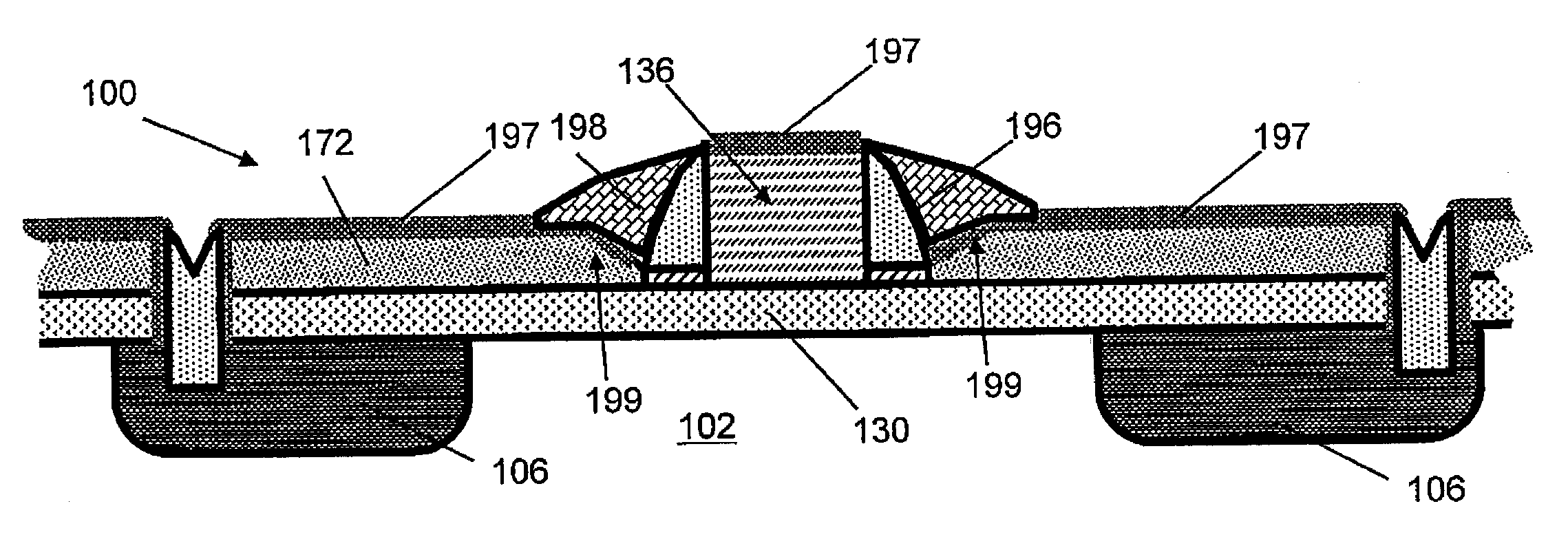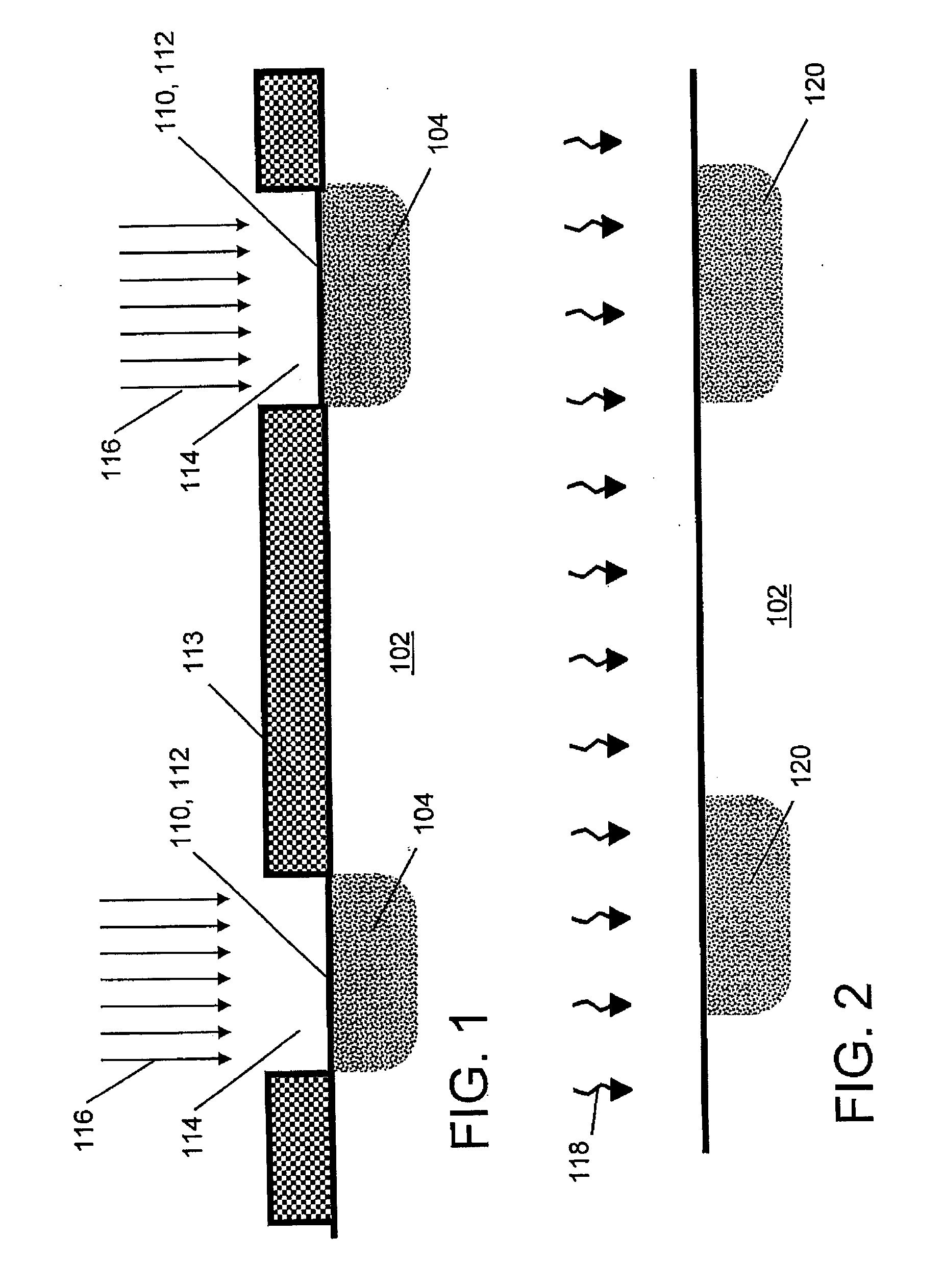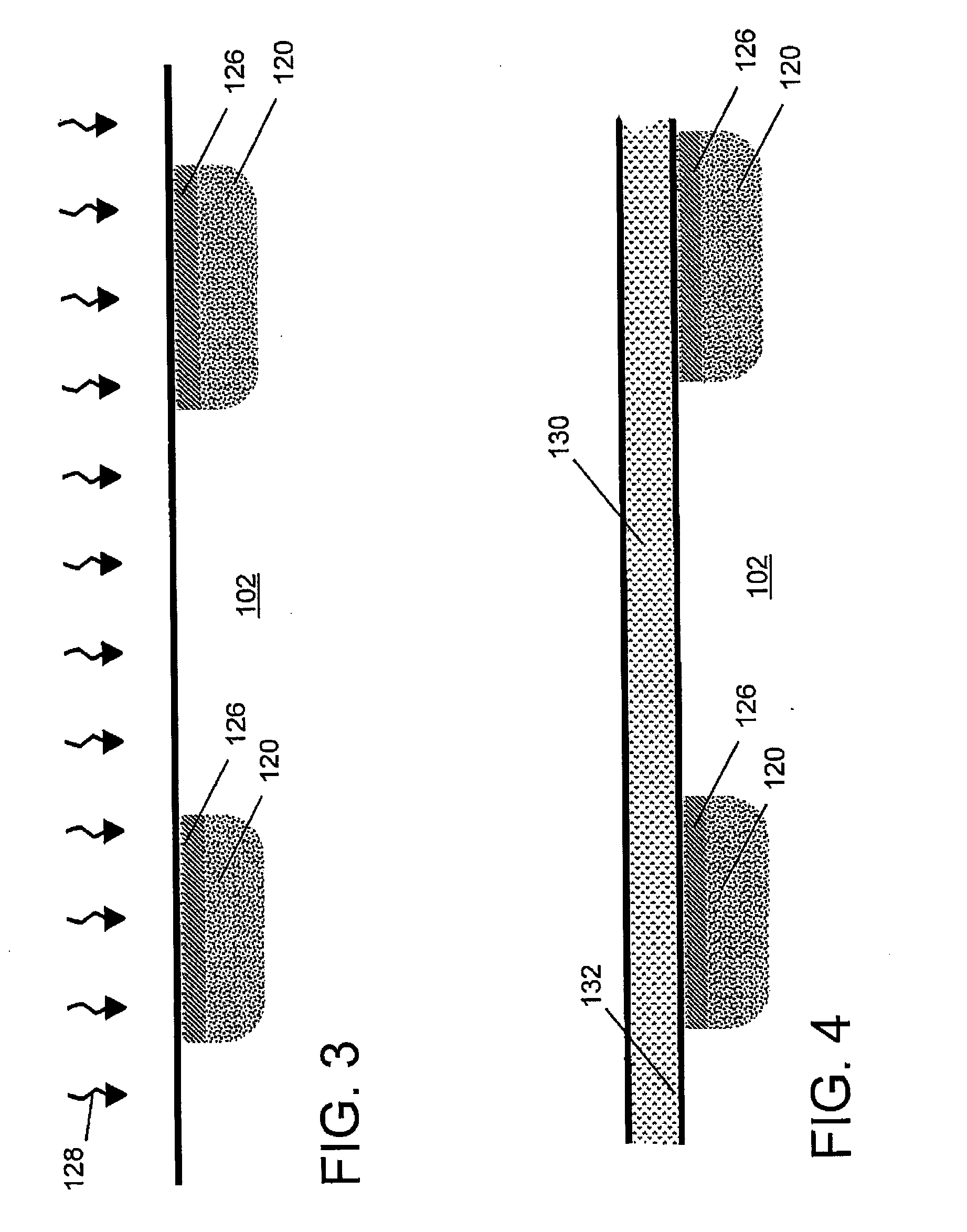Monocrystalline extrinsic base and emitter heterojunction bipolar transistor and related methods
a monocrystalline extrinsic base and emitter technology, applied in the field of integrated circuit (ic) chip fabrication, can solve the problems of polycrystalline extrinsic base, performance degradation, and inability to achieve the effect of hbt,
- Summary
- Abstract
- Description
- Claims
- Application Information
AI Technical Summary
Benefits of technology
Problems solved by technology
Method used
Image
Examples
Embodiment Construction
[0018]Turning to the drawings, FIGS. 1-29 show various embodiments of a method, and in particular, a method of forming a heterostructure bipolar transistor (HBT) 100, 200 (FIGS. 17, 25 and 27-29).
[0019]FIGS. 1-17 show one embodiment of the method. FIG. 1 shows providing a substrate 102. Substrate 102 may include but is not limited to: silicon or silicon germanium, in the form of a bulk, semiconductor-on-insulator (SOI), or virtual substrate (relaxed SiGe). In any case, substrate 102 is monocrystalline. FIG. 1 also shows one embodiment of forming an implanted region 104 (two shown) in substrate 102, which will ultimately become isolation region 106 (FIG. 13), as described herein. Implanted region 104 includes an upper surface 110 capable of having monocrystalline silicon formed thereon. In this case, implanted region 104 includes the monocrystalline silicon (now doped) of substrate 102. Implanted region 104 may be formed, for example, by forming a mask 113 and patterning / etching to f...
PUM
 Login to View More
Login to View More Abstract
Description
Claims
Application Information
 Login to View More
Login to View More - R&D
- Intellectual Property
- Life Sciences
- Materials
- Tech Scout
- Unparalleled Data Quality
- Higher Quality Content
- 60% Fewer Hallucinations
Browse by: Latest US Patents, China's latest patents, Technical Efficacy Thesaurus, Application Domain, Technology Topic, Popular Technical Reports.
© 2025 PatSnap. All rights reserved.Legal|Privacy policy|Modern Slavery Act Transparency Statement|Sitemap|About US| Contact US: help@patsnap.com



